
Periodontal Disease Treatment – Eugene, OR
Quickly Putting a Stop
to Gum Disease
Gum disease (also known as periodontal disease) is not just a prominent dental concern – it’s one of the most common overall health conditions in the world. In fact, studies show us that the number of patients diagnosed with strokes, Alzheimer’s, cancer, and heart disease combined each year is still less than the number of those diagnosed with gum disease. Generally, over 80% of the population is assumed to struggle with a mild (gingivitis) to severe (periodontitis) stage of gum disease. Thankfully, Dr. Sutter can provide these patients with the advanced attention they need to prevent and treat this dangerous condition with periodontal disease treatment in Eugene, OR.
Why Choose For Beautiful Smiles for Periodontal Disease Treatment?
-
Pain-Free Laser
Gum Therapy -
Thorough Gum Screenings at
Every Dental Checkup -
Highly Accurate Oral
Microbe Testing
Scaling &
Root Planing
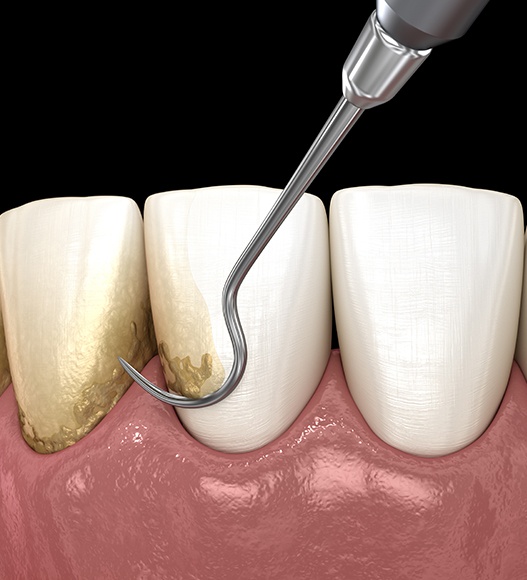
When caught early, gum disease can usually be treated using a deep cleaning, which consists of two techniques called scaling and root planing. Scaling involves physically removing the buildup of bacteria-filled tartar below the gum line, and root planing is when the roots of the teeth are slightly reshaped and smoothed out. This kickstarts the gums’ ability to heal and makes it more difficult for another infection to develop in the future.
Laser Periodontal Therapy
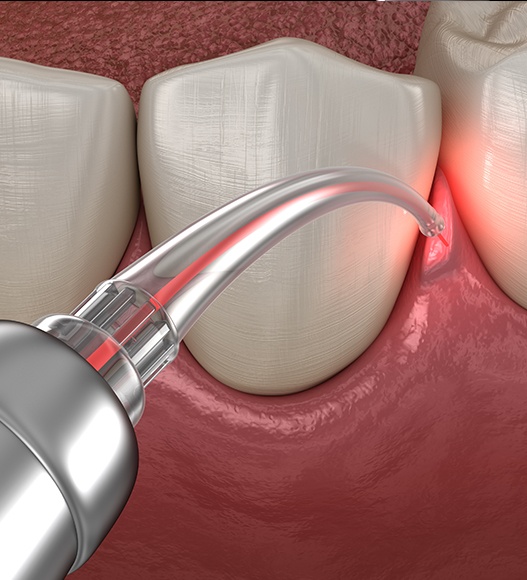
For advanced cases of gum disease, the only solution used to be minor surgery, but we can now address this kind of problem quickly and easily using our LightScalpel CO2 Laser. Upon contact with the gums, the laser literally vaporizes harmful bacteria while causing no trauma to the oral tissues themselves. The instrument emits virtually no heat, sound, or vibration, meaning the procedure is very comfortable for the patient, and post-treatment bleeding and swelling are reduced to the point of practically not existing.
Arestin Antibiotic Therapy
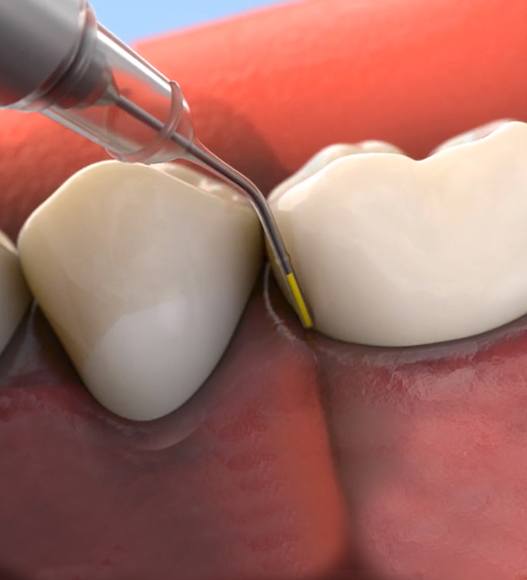
Because gum disease is a bacterial infection, another way to treat it involves a tried-and-true method—antibiotics. Rather than giving someone an oral antibiotic, we can apply a medicine called Arestin directly to the gums themselves. It quickly dries and then slowly dissolves over the course of several days, bathing the gums in a powerful antimicrobial agent that is able to reach (and kill) even the deepest, most well-hidden bacteria.
Oral Bacteria Testing
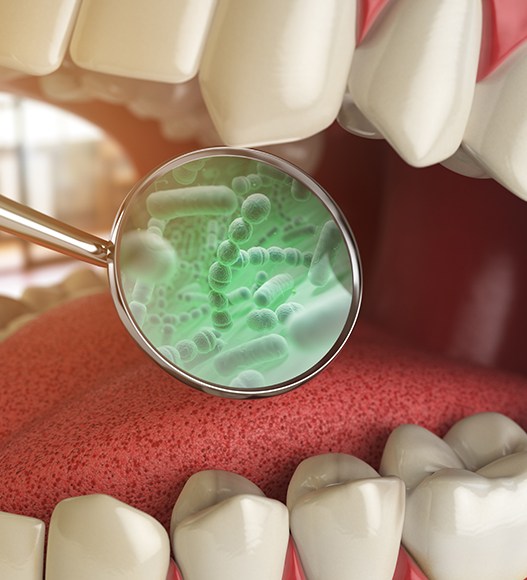
Dr. Sutter is focused on the highest level of preventive care. Traditional dental offices diagnose periodontal disease with a perio-probe and radiographic bone loss. This is a late indicator of the entire periodontal disease process, and the damage has been done. Our Eugene dental office employs the very latest microscopic technology, which leads to the most accurate identification of bacteria in the mouth.
The type of microbes in your mouth are early indicators of periodontal disease. Early intervention in the disease process interrupts bone loss. Once the bone is lost, it is gone forever! Microscopic evaluation of oral bacteria is an excellent way to assess your risk for conditions such as gum disease, which is important because a disease in the mouth has far-reaching effects for the entire body. Conversely, just because you have a little recession is not an indicator of an active disease process. The microscope eliminates the false negatives and false positives in the treatment of periodontal disease.
A Simple Sampling for Personalized Care
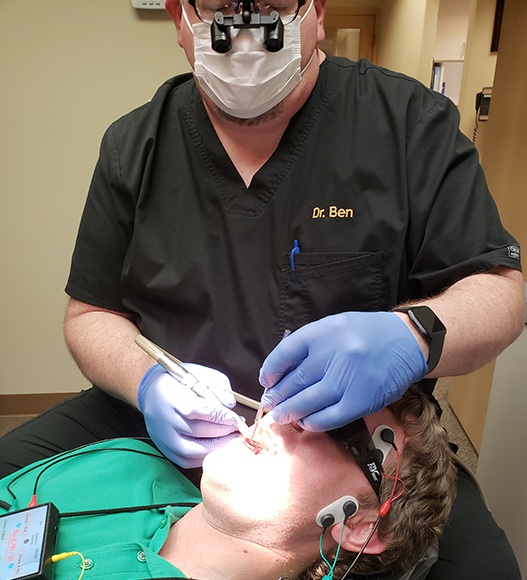
Dr. Sutter relies on the power of a research-grade microscope to identify and evaluate the presence of oral bacteria. With the help of this technology, he’s able to identify the bacteria and design an ideal plan of action for treating the patient and stopping damage from occurring. The only way our team can be sure about which bacteria you’re suffering from is to inspect them firsthand.
As bacteria accumulate in the mouth, their potential to cause significant damage, negatively affect your immune system, and travel all over the body quickly increases. In the beginning stages, they’re able to escape detection by hiding around the teeth and gums, leading to unpleasant inflammation and the destruction of soft tissue. If left untreated, this infection will worsen, causing periodontal pockets to form and teeth to become looser. At this point, it’s much more difficult to effectively get rid of the bacteria, which can result in the infection spreading outside of your mouth and damaging your overall well-being.
By utilizing a phase-contrast microscope, Dr. Sutter can give his patients the best chances of success when it comes to treating oral infections. A common alternative to this technique is Oral DNA testing, but this can only clearly identify less than 50 bacteria species – to compare, your mouth actually contains between 500-600 distinct species. With advanced gum disease, patients typically require surgical periodontal therapy, which requires the invasive use of metal instruments to pull tissue away from the teeth and remove expansive colonies of bacteria that were previously inaccessible. With the use of state-of-the-art tools, Dr. Sutter can help you avoid this procedure and maintain a much healthier smile in the long run.
Microscopic Evaluation
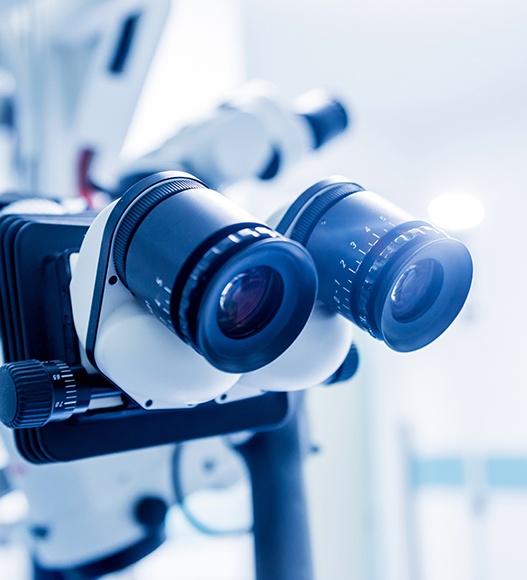
Being able to evaluate oral bacteria on a microscopic level allows Dr. Sutter to diagnose your condition at much earlier stages, especially when compared to the traditional probing technique. He can also be sure when the infection has been eradicated successfully! Just a single sample of the plaque in your mouth reveals a whole world of bacteria to our team. Dr. Sutter can also determine how much bacteria is present and what level of risk the patient is presently at. All of this information makes it easier than ever to communicate your needs. He relies on this technology both as a diagnostic tool and as an indicator of overall success. After you’ve undergone treatment, a follow-up appointment will allow Dr. Sutter to view any remaining bacteria and determine effectiveness.